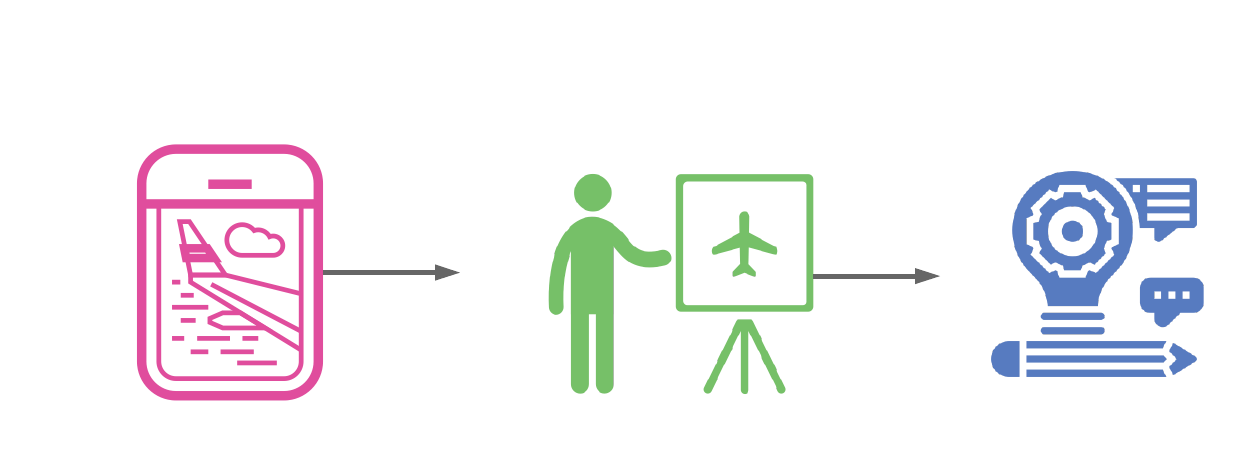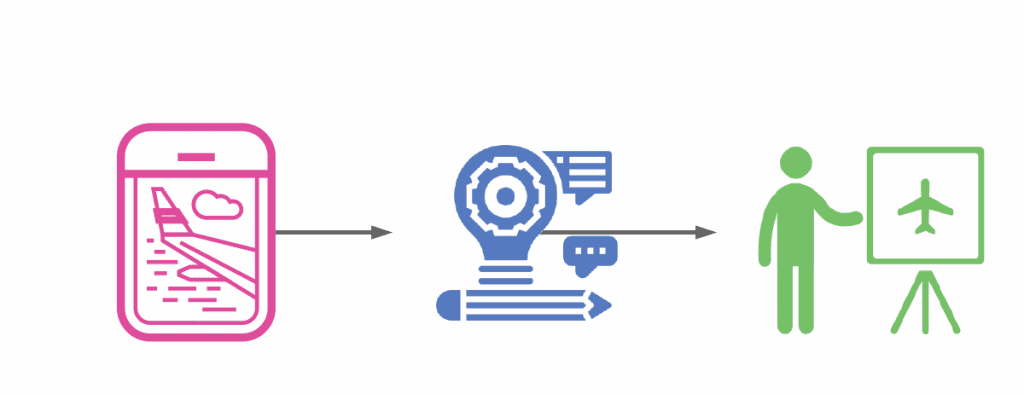Prototypes are not required as you begin your patent protection strategy. All that is required in order to achieve patent-pending status is a fully enabled written specification with drawings. This is typically achieved through filing a provisional patent application.
A better way to ask that question is; “Can I patent an Invention without a Prototype?”
To find out why; read How to Patent an Idea to get a better understanding of the difference between an idea and an invention.
In this article, we are going to take a look at four pros and cons of patenting an invention without a prototype, but first —
Prototypes can be important for any investor looking to achieve the all-important proof of concept. Now, depending on your level of sophistication with the subject matter you’re inventing, you may or may not need to develop a basic prototype to confirm it will work the way you intend.
For example, if you’re a plumber, and you conceive of an amazing new type of faucet that will prevent fatigue damage and stop leaks if it fails, it’s likely that you could simply sketch it out, fully describe it, and have all the protection you need without actually buying materials, hiring an engineer to design it, and build it.

But, if that same plumber invents a new type of airplane wing, and conceives of a ducted fan combination with a rotorcraft, he’s likely WAY outside of his knowledge base and probably should prototype the invention in order to get to a proof of concept.

One of the most beneficial times to get a prototype built is after you file your patent application. Most typically this is after a provisional patent application. The key here is to build the prototype in order to TEST IT!
Seek 3rd party (non-biased – i.e. not your wife, girlfriend, or mother) to give you solid feedback on the invention. Then, take any improvements you make or additional enhancements, and roll those up into the nonprovisional patent filing (which must be made within a year).
If you have questions on filing a provisional or non-provisional patent application or seek feedback on your invention book a free consultation today!
Let’s dive into the pros/cons of patenting without a prototype.
4 Pros to Patenting Without a Prototype
Reduce Risks of Early Publication or Disclosure

If you focus your efforts on building an (often expensive) prototype prior to protecting your invention with patents, you run the risk of someone else getting access to your invention and even worse, publishing it. This can happen if you take your prototypes online (think Kickstarter, Wefunder), or to in-person trade shows, events, angel investor groups, etc.
The problem with disclosure or publication of your invention prior to filing a patent is that there is a very limited time to file a patent application (1 year) once you publicly use, sell, offer to sell, or publish your invention. This 1-year statutory bar, if violated, will be used to invalidate your entire patent claims, if it is later found out.
There are other risks to early publication or disclosure. If you must rely on 3rd parties or workshops (often called maker spaces these days) that are shared by other people in order to machine, build, and assemble your invention.
You are putting yourself at risk of 3rd parties seeing or having access to your invention without your permission, and certainly without confidentiality.
Lastly, if someone sees your invention, they may decide to defraud the patent office and file the invention as if it was theirs, claiming to be the rightful inventor. Now, there are ways to pursue this via a Derivation proceeding, but you’ve got to go through the trouble of expensive and time-consuming litigation and everything that goes with it.
So, by not prototyping and inadvertently disclosing your invention to anyone until after you file your patent application, you are limiting (if not eliminating) the risks associated with early disclosure.
Once you file the patent application, you may then share the contents of the application with 3rd parties, but you should do so still under a confidentiality agreement, as what may be discussed may extend beyond the scope of what was originally filed in your patent application.
Lower Upfront Expenses

By not putting money/time/effort into prototyping upfront while also hiring a patent counsel to file your patent application, you’re going to save money and instead focus it towards just getting the legal protection you need, first.
It’s hard to say exactly what costs of prototyping are, as there are many phases of prototyping and materials costs vary a lot. So, it may be true that prototyping a small, simple mechanical invention could cost under $100 to design and generate a 3D printed model.
In those cases, maybe it does make sense to prototype. However, for more complex machines, or software, prototyping could easily be over $10,000. In those cases, that money is better spent preparing and filing a solid patent application.
Helpful Links:
- Blog Article: How Much Does a Patent Cost?
Move Faster through Patent Process

So, there’s this thing called multi-tasking…and its been proven to actually not work, and instead, your brain ends up just switching rapidly between each task, losing focus on each one, resulting in a net that is far lower than if you had focused on just one task for an extended period of time.
The same is true for patenting: Don’t try to multitask!
Focusing on developing your invention to the point you are ready to research and then file a patent on it, will bring a much quicker pace through the first part of the entire patent process.
By fleshing out every detail of your invention for your patent attorney, the first step of having a full invention disclosure will enable the patent attorney team to perform the best patent search possible.
If you were distracted and trying to also juggle the development of the product, prototyping, and testing, you’d likely be stretched for time, increasing the likelihood that you’d leave out details, making the search more difficult and the opinion on patentability less clear.
While we cannot speed up the pace at which the USPTO examines applications (apart from filing expedited processing through Track 1), having a well-written, comprehensive patent application, leads to fewer modifications or edits during prosecution.
As it happens a lot, inventors trying to multi-task and start companies and build prototypes, end up remembering they forgot to include certain things and have to deal with expenses to add them in and deal with the ramifications of not being able to claim priority to that because it may not have everything it should have at the onset.
Helpful Links:
- Blog Article: How Long Does It Take to Get a Patent?
Reduce Design Deviation During Patent Prosecution

If you are building a prototype or are actually selling your invention while the patent is pending, there are some downsides because you will inevitably be changing your design based on customer feedback and manufacturers, etc.
While this can be a good thing (see below in Con section 3), it will cause more “design churn” and “deviation” during patent prosecution.
This means that you will need to keep a careful eye to make sure that the product you are building and selling will actually be covered by the patent you are acquiring! Yes, it is possible for things to slowly change over the course of 1-2 years to where the product being sold no longer is covered by the set of claims that is acquired by the patent, once granted.
4 Cons to Patenting without a Prototype
Proof of Concept Incomplete

There is a need to define the differences between a proof of concept and a prototype. A proof of concept can be a drawing, a sketch, or just part of the invention that the inventor deems to be the heart of their creation – and is needed in order to put their doubts at bay, but is likely far from a working model.
Whereas a prototype is just that – a full-scale working model, which includes, no doubt, the “heart of innovation” but also includes the surrounding structure, traditional, and state-of-the-art materials to bring to life the full-scale model. I’ve also heard prototypes be described as market-ready designs.
Proof of concepts are meant to be more functional in nature. Their purpose is to prove (or disprove) the assumptions the inventor has made. It can be said that if you don’t develop a working prototype to test the functionality, there may be some proving that is incomplete.
If you as the inventor feel as though you have not proven the concept, it would be best to get your prototype to the point where you are certain you’ve developed something unique and you’re excited about it! This should be done before you even call a Patent Attorney.
Helpful Links:
- Blog Article: How to Invent Something in 10 Steps
- Blog Article: Is My Idea Patentable? (The #1 Question to Ask…)
- Blog Article: How to do a Patent Search in 6 Steps (The Definite Guide)
Manufacturability Can Inform Patent Application

If you move forward in the patent process without having developed a full prototype, it’s likely you haven’t had to think or plan for manufacturing your product.
The key issue here is that the invention may take on different embodiments or versions depending on how it is made, and those should be discussed in the patent application in order to most completely cover the broadest scope of prospective rights.
While most patent attorneys will help inventors consider these aspects, it would be impossible to foresee certain manufacturing challenges that arise once prototyping is completed and products are modified in order to be produced in an economical way.
Things like moldings, hinges, fastener types, material types, shapes, proportions, tolerances all change (sometimes dramatically) when it comes time to manufacture for market-ready products.
In addition to the actual making of the product, considering how it will be sold in retail or online stores is also important when considering packaging, or integration with other products – these considerations if taken into account into the patent specification will allow a more robust claim scope, and assurance that there will not be any issues with respect to infringing on other patent holders as well.
No Customer/Industry Feedback during the Patent Process

This is the largest drawback to not prototyping or having a market-ready product while seeking a patent. In other words, this is the one thing I do suggest to inventors that haven’t tested their products before, or are new to a certain industry (inventing outside of their experience).
Getting feedback from potential customers or testers is one of the best ways to iterate and evolve an invention from something that is merely innovative to something that will have big market demand.
That said, it is a major con to not have this feedback while going through the patent process, because the patent application and prosecution is only focused on theoretical embodiments/versions as opposed to actual/real products.
In addition, the market will guide inventors that have sold products on what features are most impressive to the customers, which can actually be used in an argument when fighting a USPTO examiner’s 35 USC 103 obviousness rejection.
To get feedback on your invention book a free consultation today!
Lose Insight on Improvements/Iterations

A final bonus inventors get who decide to prototype and launch their product while in the patent process is that they can get a better sense of competitive pressures. This can help lead to further innovations in the same patent family (for which continuations/divisionals may be born) or brand new inventions (for which patent searches and provisionals/non-provisionals should be filed).
These insights from competitors are one thing, but the improvements from within your own company are another! Once the alpha version has been floating around your company for a while, the beta version is just around the corner (if you’ve got a good R&D team that is).
For many inventors (and companies) it is important to continue to innovate and improve and to push for what’s next…so if you don’t build the alpha…how will you continue to improve?
In Summary
As you can probably tell, when I do give my opinion or recommendation for whether to prototype while seeking a patent, I tend to be very nuanced and may answer depending on what the invention is, how the market is behaving, the competitive landscape, monetary constraints, statutory bars, just to name a few…
4 Pros to Patenting Without a Prototype
- Reduce Risks of Early Publication or Disclosure
- Lower Upfront Expenses
- Move Faster through Patent Process
- Reduce Design Deviation During Patent Prosecution
4 Cons to Patenting Without a Prototype
- Proof of Concept Incomplete
- Manufacturability Can Inform Patent Application
- No Customer/Industry Feedback during the Patent Process
- Lose Insight on Improvements/Iterations
To find out the exact answers to the invention YOU have, schedule a free consultation today!
It’s my hope that this article helped to level-set you on the many things that should be considered prior to prototyping as part of your inventor journey and to also set you free in knowing about what the risks/benefits are for your choice.

